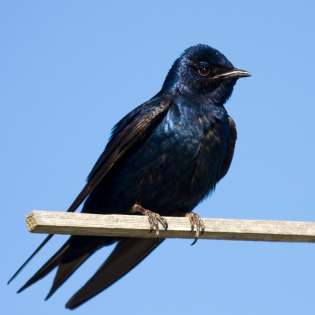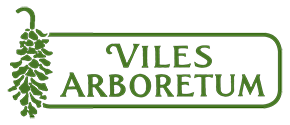Viles Arboretum is excited to be partnering with the Maine Department of Inland Fisheries and Wildlife on a Purple Martin conservation project. Starting May 25th, MDIFW will begin the installation of a nesting structure for Purple Martins in one of the fields on the back of the Arboretum property. This will be an important step for Purple Martin conservation efforts in the State of Maine.
What is a Purple Martin? There's a good chance you haven’t even heard of these remarkable little birds, as they have become exceedingly rare in the past fifty years. They are a member of the swallow family, other members you may be more familiar with include the Tree Swallow and Barn Swallow. Like all swallows, Purple Martins are voracious predators of aerial insects. Equipped with large, net-like mouths and narrow wings, they cruise around with incredible agility scooping insects from the air.
may be more familiar with include the Tree Swallow and Barn Swallow. Like all swallows, Purple Martins are voracious predators of aerial insects. Equipped with large, net-like mouths and narrow wings, they cruise around with incredible agility scooping insects from the air.
There is a long history of humans and Purple Martins engaging in mutually beneficial relationships, with humans constructing housing structures for Martin colonies to encourage the birds to set up in an area where insect control was needed. At some point during this relationship, Purple Martin’s became almost entirely dependent on human-made housing across much of their range. While the practice of constructing nesting structures was popular in the 1700-1800’s, the practice began to fall out of fashion as other methods for insect control became commonplace. When nesting sites disappeared, so did the birds.
While the Purple Martin faces many challenges across its range, one of the most immediate actions we can take here in Maine is making more housing structures available to Purple Martins. There are a few existing colonies in Maine, and while most birds will return to their original nest colony, as space becomes limited, the birds will begin seeking new locations to establish. By installing a nesting structure here at the Arboretum, we hope to encourage the establishment of a new colony. Even if the birds don't come, we hope that the structure will serve to inspire our Visitors to consider constructing a nesting site on their own property, or in the very least raise awareness for this incredible bird.

